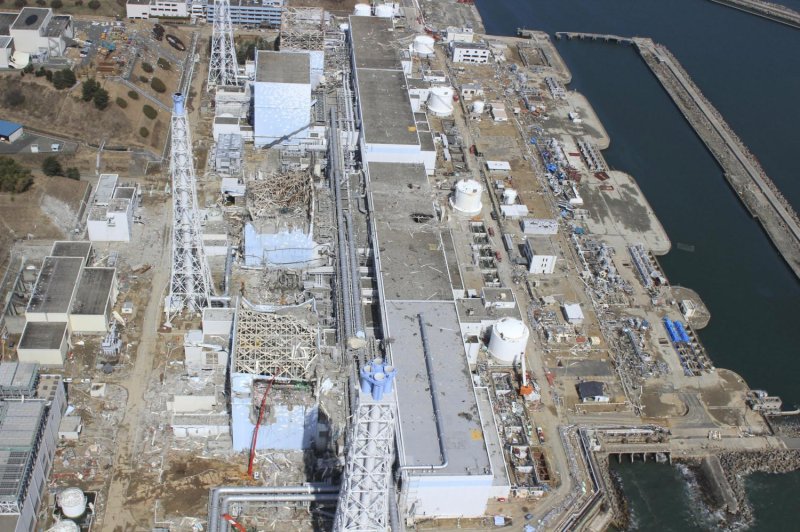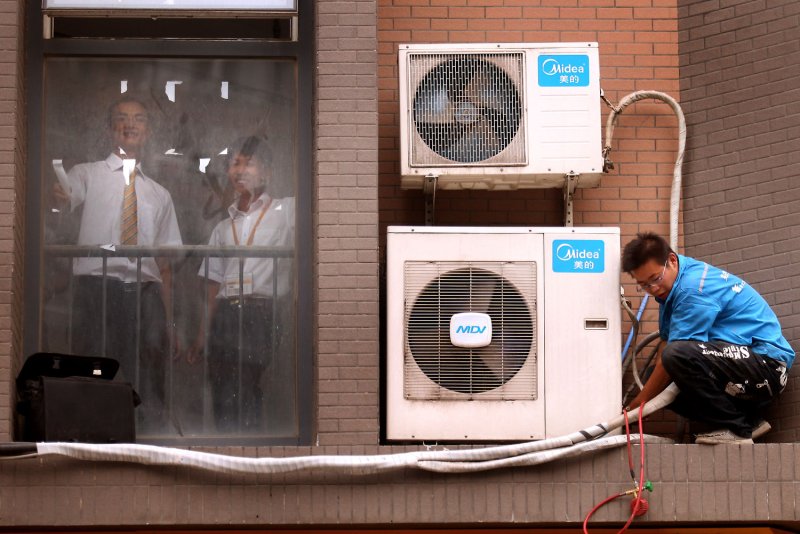Eco-Apocalypse, a Class Act
In 1876, Marx’s collaborator, Frederich Engels, offered a prophetic caveat: “Let us not … flatter ourselves overmuch on account of our human conquest over nature. For each such conquest takes its revenge on us. … At every step we are reminded that we by no means rule over nature like a conqueror over a foreign people, like someone standing outside of nature—but that we, with flesh, blood, and brain, belong to nature, and exist in its midst. …”
With its never-ending emphasis on exploitation and expansion, and its indifference to environmental costs, capitalism appears determined to stand outside nature. The essence of capitalism, its raison d’être, is to convert nature into commodities and commodities into capital, transforming the living earth into inanimate wealth. This capital accumulation process wreaks havoc upon the global ecological system. It treats the planet’s life-sustaining resources (arable land, groundwater, wetlands, forests, fisheries, ocean beds, rivers, air quality) as dispensable ingredients of limitless supply, to be consumed or toxified at will. Consequently, the support systems of the entire ecosphere—the planet’s thin skin of fresh air, water, and top soil—are at risk, threatened by such things as global warming, massive erosion, and ozone depletion.
Global warming is caused by tropical deforestation, motor vehicle exhaust, and other fossil fuel emissions that create a “greenhouse effect,” trapping heat close to the earth’s surface. This massed heat is altering the atmospheric chemistry and climatic patterns across the planet, causing record droughts, floods, tidal waves, snow storms, hurricanes, heat waves, and great losses in soil moisture. We now know that the planet does not have a limitless ability to absorb heat caused by energy consumption.
Another potential catastrophe is the shrinkage of the ozone layer that shields us from the sun’s deadliest rays. Over 2.5 billion pounds of ozone-depleting chemicals are emitted into the earth’s atmosphere every year, resulting in excessive ultraviolet radiation that is causing an alarming rise in skin cancer and other diseases. Increased radiation is damaging trees, crops, and coral reefs, and destroying the ocean’s phytoplankton—source of about half of the planet’s oxygen. If the oceans die, so do we.
At the same time, the rise in pollution and population has given us acid rain, soil erosion, silting of waterways, shrinking grasslands, disappearing water supplies and wetlands, and the obliteration of thousands of species, with hundreds more on the endangered list.
In 1970, on what was called “Environment Day,” President Richard Nixon intoned: “What a strange creature is man that he fouls his own nest.” With that utterance, Nixon was helping to propagate the myth that the ecological crisis we face is a matter of irrational individual behavior rather than being of a social magnitude. In truth, the problem is not individual choice but the system that imposes itself on individuals and prefigures their choice. Behind the ecological crisis is the reality of class interest and power.
An ever-expanding capitalism and a fragile, finite ecology are on a calamitous collision course. It is not true that the ruling politico-economic interests are in a state of denial about this. Far worse than denial, they are in a state of utter antagonism toward those who think the planet is more important than corporate profits. So they defame environmentalists as “eco-terrorists,” “EPA gestapo,” “Earth Day alarmists,” “tree huggers,” and purveyors of “Green hysteria” and “liberal claptrap.”
Some environmental activists in this country have been the object of terrorist assaults conducted by unknown assailants, with the implicit tolerance of law enforcement authorities.11 Autocrats in countries like Nigeria, in bed with the polluting oil companies, have waged brutal war upon environmentalists, going so far as to hang popular leader Ken Saro Wiwa.
In recent years, conservatives within and without Congress, fueled by corporate lobbyists, have supported measures that would (1) prevent the Environmental Protection Agency from keeping toxic fill out of lakes and harbors, (2) eliminate most of the wetland acreage that was to be set aside for a reserve, (3) completely deregulate the production of chlorofluorocarbons that deplete the ozone layer, (4) virtually eliminate clean water and clean air standards, (5) open the unspoiled Arctic wildlife refuge in Alaska to oil and gas drilling, (6) defund efforts to keep raw sewage out of rivers and away from beaches, (7) privatize and open national parks to commercial development, (8) give the few remaining ancient forests over to unrestrained logging, and (9) repeal the Endangered Species Act. In sum, their openly professed intent has been to eviscerate all our environmental protections, however inadequate these are.
Conservatives maintain that there is no environmental crisis. Technological advances will continue to make life better for more and more people. One might wonder why rich and powerful interests take this seemingly suicidal anti-environmental route. They can destroy welfare, public housing, public education, public transportation, social security, Medicare, and Medicaid with impunity, for they and their children will not thereby be deprived, having more than sufficient means to procure private services for themselves. But the environment is a different story. Wealthy conservatives and their corporate lobbyists inhabit the same polluted planet as everyone else, eat the same chemicalized food, and breathe the same toxified air.
In fact, they do not live exactly as everyone else. They experience a different class reality, residing in places where the air is somewhat better than in low and middle income areas. They have access to food that is organically raised and specially prepared. The nation’s toxic dumps and freeways usually are not situated in or near their swanky neighborhoods. The pesticide sprays are not poured over their trees and gardens. Clearcutting does not desolate their ranches, estates, and vacation spots. Even when they or their children succumb to a dread disease like cancer, they do not link the tragedy to environmental factors—though scientists now believe that most cancers stem from human-made causes. They deny there is a larger problem because they themselves create that problem and owe much of their wealth to it.
But how can they deny the threat of an ecological apocalypse brought on by ozone depletion, global warming, disappearing top soil, and dying oceans? Do the dominant elites want to see life on earth, including their own, destroyed? In the long run they indeed will be victims of their own policies, along with everyone else. However, like us all, they live not in the long run but in the here and now. For the ruling interests, what is at stake is something of more immediate and greater concern than global ecology: It is global capital accumulation. The fate of the biosphere is an abstraction compared to the fate of one’s own investments.
Furthermore, pollution pays, while ecology costs. Every dollar a company must spend on environmental protections is one less dollar in earnings. It is more profitable to treat the environment like a septic tank, pouring thousands of new harmful chemicals into the atmosphere each year, dumping raw industrial effluent into the river or bay, turning waterways into open sewers. The longterm benefit of preserving a river that runs alongside a community (where the corporate polluters do not live anyway) does not weigh as heavily as the immediate gain that comes from ecologically costly modes of production.
Solar, wind, and tidal energy systems could help avert ecological disaster, but they would bring disaster to the rich oil cartels. Six of the world’s ten top industrial corporations are involved primarily in the production of oil, gasoline, and motor vehicles. Fossil fuel pollution means billions in profits. Ecologically sustainable forms of production threaten those profits.
Immense and imminent gain for oneself is a far more compelling consideration than a diffuse loss shared by the general public. The cost of turning a forest into a wasteland weighs little against the profits that come from harvesting the timber.
This conflict between immediate private gain on the one hand and remote public benefit on the other operates even at the individual consumer level. Thus, it is in one’s longterm interest not to operate a motor vehicle, which contributes more to environmental devastation than any other single consumer item. But we have an immediate need for transportation in order to get to work, or do whatever else needs doing, so most of us have no choice except to own and use automobiles.
The “car culture” demonstrates how the ecological crisis is not primarily an individual matter of man soiling his own nest. In most instances, the “choice” of using a car is no choice at all. Ecologically efficient and less costly electric-car mass transportation has been deliberately destroyed since the 1930s in campaigns waged across the country by the automotive, oil, and tire industries. Corporations involved in transportation put “America on wheels,” in order to maximize consumption costs for the public and profits for themselves, and to hell with the environment or anything else.
The enormous interests of giant multinational corporations outweigh doomsayer predictions about an ecological crisis. Sober business heads refuse to get caught up in the “hysteria” about the environment, preferring to quietly augment their fortunes. Besides, there can always be found a few experts who will go against all the evidence and say that the jury is still out, that there is no conclusive proof to support the alarmists. Conclusive proof in this case would come only when we reach the point of no return.
Ecology is profoundly subversive of capitalism. It needs planned, environmentally sustainable production rather than the rapacious unregulated kind. It requires economical consumption rather than an artificially stimulated, ever-expanding consumerism. It calls for natural, low-cost energy systems rather than profitable, high-cost, polluting ones. Ecology’s implications for capitalism are too horrendous for the capitalist to contemplate.
Those in the higher circles, who once hired Blackshirts (Nazis) to destroy democracy out of fear that their class interests were threatened, have no trouble doing the same against “eco-terrorists.” Those who have waged merciless war against the Reds (Communists) have no trouble making war against the Greens. Those who have brought us poverty wages, exploitation, unemployment, homelessness, urban decay, and other oppressive economic conditions are not too troubled about bringing us ecological crisis. The plutocrats are more wedded to their wealth than to the Earth upon which they live, more concerned with the fate of their fortunes than with the fate of the planet.
The struggle over environmentalism is part of the class struggle itself, a fact that seems to have escaped many environmentalists. The impending eco-apocalypse is a class act. It has been created by and for the benefit of the few, at the expense of the many. The trouble is, this time the class act may take all of us down, once and forever.
In the relationship between wealth and power, what is at stake is not only economic justice, but democracy itself and the survival of the biosphere. Unfortunately, the struggle for democracy and ecological sanity is not likely to be advanced by trendy, jargonized, theorists who treat class as an outmoded concept and who seem ready to consider anything but the realities of capitalist power. In this they are little different from the dominant ideology they profess to oppose. They are the ones who need to get back on this planet.
The only countervailing force that might eventually turn things in a better direction is an informed and mobilized citizenry. Whatever their shortcomings, the people are our best hope. Indeed, we are they. Whether or not the ruling circles still wear blackshirts, and whether or not their opponents are Reds, la lutta continua, the struggle continues, today, tomorrow, and through all history.










